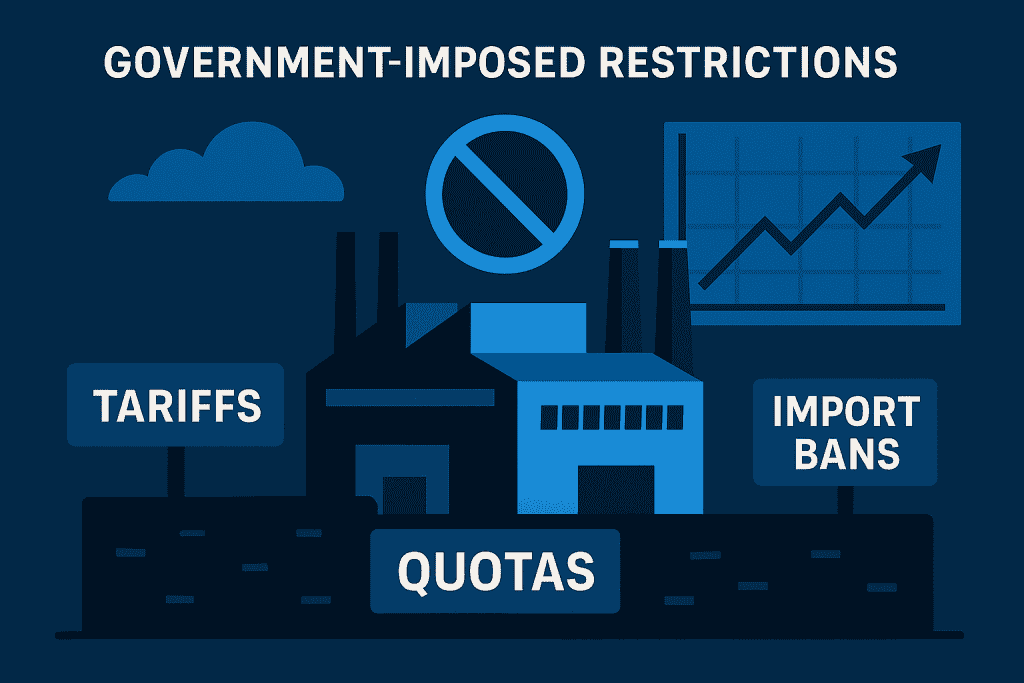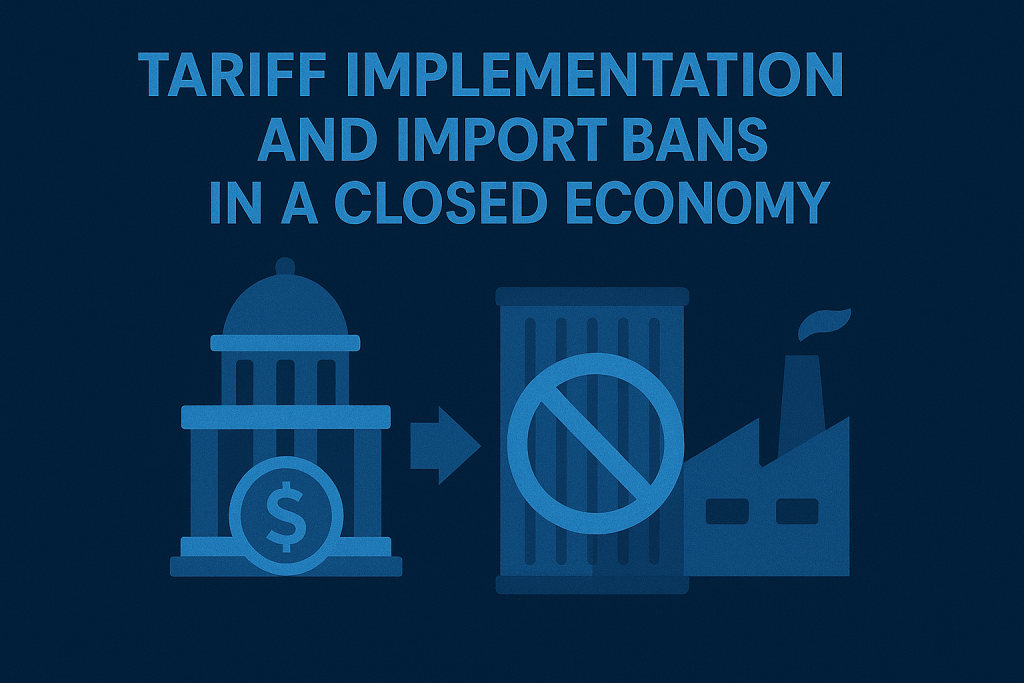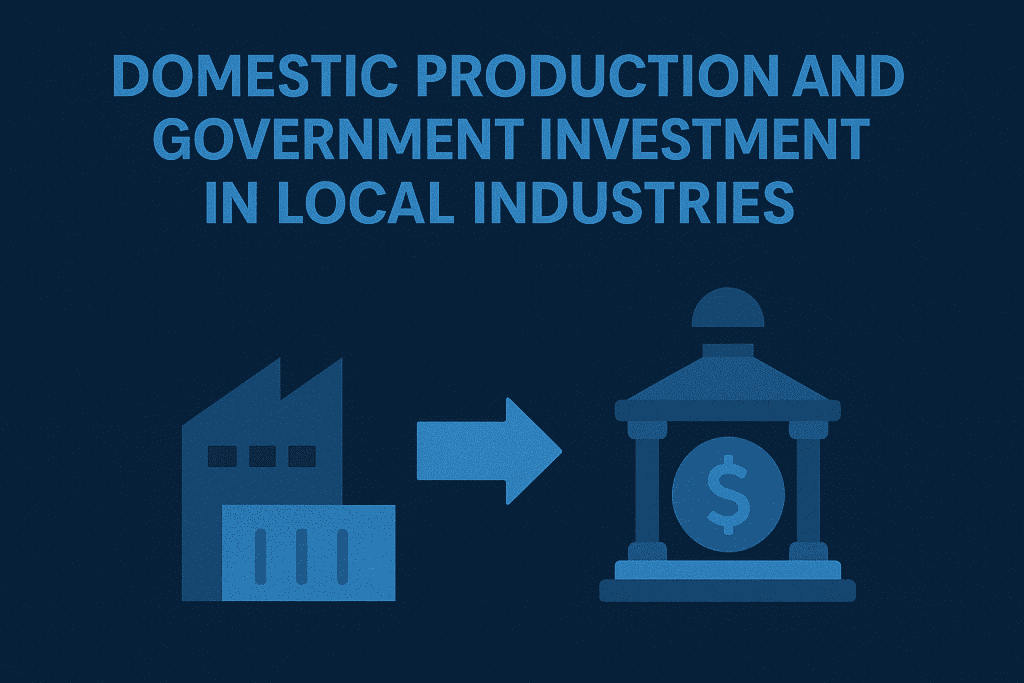
A closed economy is one where a country avoids international trade, relying solely on its own resources and industries to meet domestic needs. While rare in today’s interconnected world, this approach has been adopted historically to achieve self-reliance, strengthen national security, or protect local industries from external competition.
Government-imposed restrictions in a closed economy play a critical role in shaping its structure and functioning. These include trade barriers, such as tariffs and import bans, to eliminate foreign dependency, and financial regulations to control capital outflows and restrict foreign investments. Such policies aim to protect local industries and maintain economic stability.
Self-sufficiency is also prioritized, with heavy investments in agriculture, energy, and manufacturing to ensure that essential goods are produced domestically. Additionally, governments control monetary policy, managing inflation and currency circulation to stabilize the economy, while implementing labor policies to optimize workforce productivity and retain skilled labor.
This guide examines these restrictions, their importance, and how they are implemented effectively to sustain a closed economy.
Materials or Tools Needed
To understand or implement government restrictions in a closed economy, you need the following:
| Materials/Tools | Description |
|---|---|
| Economic data and reports | Statistics on national production levels |
| Knowledge of fiscal and monetary policies | Understanding of policy instruments |
| Regulatory framework documents | Laws and guidelines for implementation |
| Analytical tools (Excel, databases) | For tracking resource allocation |
Step-by-Step Instructions on Restrictions in a Closed Economy
Step 1: Establish Trade Barriers

To preserve the integrity of a closed economy, the first and most essential step is to eliminate reliance on foreign trade. This requires the government to implement a combination of tariffs, quotas, and outright bans on imports and exports. For example, luxury goods may be prohibited from entering the country, while incentives are introduced to encourage local production of essential goods.
Why it’s important:
By erecting trade barriers, governments can shield local industries from foreign competition, giving them room to grow and thrive without external pressures.
Step-by-Step Details:
- First, identify which products and industries are crucial for national self-sufficiency.
- Next, introduce comprehensive legislation restricting both imports and exports.
- Finally, implement policies that actively incentivize domestic production and reduce dependency on foreign goods.
Step 2: Regulate Foreign Investments and Capital Outflows
Equally important, a closed economy must prevent financial resources from flowing out of the country. This is done by restricting foreign investments and limiting citizens’ or companies’ ability to transfer money abroad.
Detailed Instructions:
- Initially, impose limits on foreign ownership of businesses to maintain national control.
- Prohibit foreign exchange transactions to restrict currency outflows and maintain stability.
- Enforce strict banking regulations to closely monitor all capital movements.
Pro Tip: Encourage citizens and businesses to reinvest their money domestically by offering attractive tax breaks, subsidies, or low-interest loans for national projects.
Step 3: Develop Self-Sufficiency Programs

Once trade and financial flows are regulated, the focus must shift to building self-reliance. Governments typically invest heavily in critical sectors such as agriculture, energy, and manufacturing to ensure the country can meet its own demands sustainably.
Actionable Steps:
- Start by establishing state-run industries to produce critical goods such as food, steel, and pharmaceuticals.
- Offer subsidies and tax breaks to farmers and manufacturers to encourage domestic production and innovation.
- Promote research and development initiatives to discover alternative resources and new technologies that can further reduce dependency on imports.
Why this matters:
Self-sufficiency programs not only ensure stability but also foster innovation and create a resilient economy that can withstand external pressures.
Step 4: Control the Monetary Policy
A critical element of maintaining a closed economy is regulating the money supply and controlling inflation. Through effective monetary policies, governments can sustain economic stability and prevent imbalances.
How to Do This:
- Central banks must first issue clear and strict guidelines for regulating the nation’s money supply.
- Limit borrowing from foreign entities to avoid dependency on international lenders.
- Regularly monitor inflation rates and take swift corrective measures, such as adjusting interest rates or modifying currency circulation, to maintain balance.
Pro Tip: Keep inflation under control by balancing money supply and production levels to prevent excess demand.
Step 5: Impose Population and Labor Policies
Because a closed economy relies exclusively on its internal workforce, governments must ensure labor productivity and workforce retention. Population and labor restrictions are often introduced to optimize these factors.
Steps:
- Begin by implementing workforce training programs aimed at improving skills and boosting productivity.
- Regulate wages to promote equitable income distribution and prevent economic disparity.
- Enforce policies that limit emigration, especially among skilled workers, to retain valuable labor within the country.
Why it’s necessary:
Strong labor policies ensure the country’s workforce is equipped and motivated to meet the demands of a self-contained economy.
By following these steps, governments can effectively establish and maintain the key restrictions necessary for a closed economy to function successfully. Each measure contributes to building a self-reliant system that prioritizes local industries, resources, and workforce.
Tips and Warnings About Closed Economy
| Tips for Success | Warnings |
|---|---|
| Prioritize industries that meet basic needs first. | Over-restricting can stifle innovation. |
| Create incentive programs to encourage participation. | Black markets may emerge as a result. |
| Continuously adapt policies based on economic growth. | Overprinting money can lead to hyperinflation. |
Additional Insights:
- Communication with citizens is key to gain their support.
- Consider gradual implementation to minimize economic shocks.
Conclusion
A closed economy relies heavily on strict government interventions to ensure self-reliance and economic stability. By imposing trade barriers, regulating monetary flows, and fostering domestic industries, the government aims to create a sustainable system independent of global markets.
While such an approach has its challenges, it can be successful when implemented thoughtfully and with the right strategies. If you’re studying economic policies or interested in how governments manage their economies, understanding these restrictions offers valuable insights into the workings of closed systems.
FAQ
What is the main goal of a closed economy?
The primary goal is to achieve self-reliance by producing everything the country needs domestically, without relying on international trade.
How does a government control trade in a closed economy?
Governments impose trade barriers such as tariffs, quotas, and import bans to restrict international trade and promote local industries.
What are the benefits of a closed economy?
Benefits include protecting local industries, reducing dependency on foreign markets, and fostering national self-sufficiency.
Resources
- Investopedia: Learn What Is a Closed Economy and Why Are There None Today?
- Digitalisenow: Understanding Government Restrictions in a Closed Economy
- Investopedia: Discover Protectionism: Examples and Types of Trade Protections
